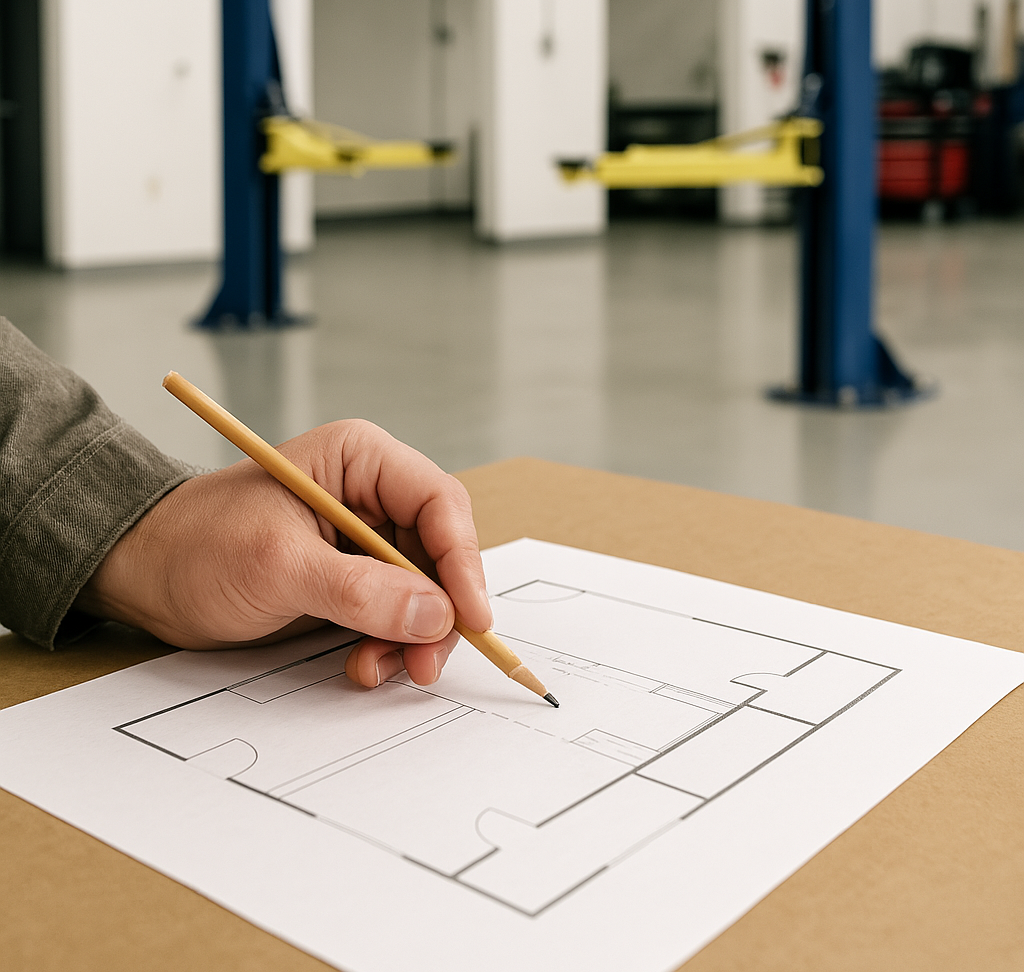Top 5 Mistakes to Avoid When Buying a 2-Post Lift
Posted by Sean Latham on Mar 27th 2025
Top 5 Mistakes to Avoid When Buying a 2-Post Lift
Buying a 2-post automotive lift is a serious investment—and one that can either improve your shop’s efficiency or cause major headaches if done wrong. Here are five of the most common mistakes buyers make, and how to avoid them.
Mistake #1: Not Measuring Ceiling Height and Bay Width
One of the most overlooked steps is confirming your shop’s physical space. Every lift model has different minimum ceiling requirements and bay widths.
- Measure your ceiling height (from floor to lowest obstruction)
- Check vehicle height, including roof racks or truck cabs
- Review lift spec sheets carefully
Pro Tip: Plan for extra clearance if you service taller trucks or vans.
Mistake #2: Choosing the Wrong Arm Configuration
2-post lifts come in symmetric, asymmetric, and hybrid (versymmetric) designs. Choosing the wrong type for your vehicle mix leads to safety issues and workflow problems.
- Symmetric: Best for heavy-duty trucks and fleet work
- Asymmetric: Easier access for passenger vehicles
- Versymmetric: Flexible arms for mixed vehicle shops
Read our full lift comparison guide →
Mistake #3: Ignoring Electrical Requirements
Most 2-post lifts require a 220V or 230V power supply. Failing to confirm compatibility can delay installation or require expensive electrical work.
- Confirm your power phase and amperage
- Check whether a dedicated circuit is required
- Consider backup power sources if needed
Mistake #4: Buying Based on Price Alone
Cheap lifts may lack the quality, warranty, or safety features that premium models like Rotary, Challenger, and Forward provide.
- Check for ALI certification
- Look for steel thickness, cylinder quality, and weld integrity
- Read real-world reviews from shop owners
Think long-term: Reliable equipment costs less over time.
Mistake #5: Not Planning for Installation or Future Service
Don’t forget to factor in installation time, labor, and potential service costs. Some lifts require special tools or experienced techs to install properly.
- Ask if install is included or separate
- Check local installer availability
- Plan for regular maintenance down the road
Final Thought:
Avoiding these mistakes ensures your lift performs safely, lasts longer, and supports your shop’s growth.

